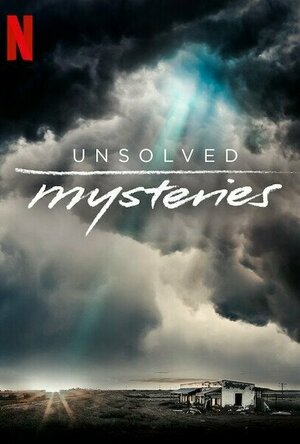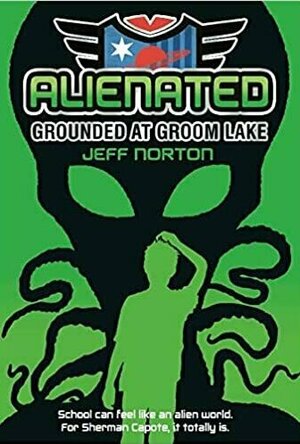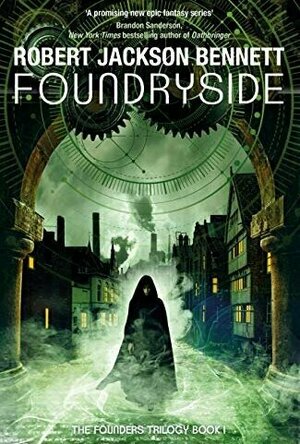Kirk Bage (1775 KP) rated Unsolved Mysteries in TV
Jan 22, 2021 (Updated Jan 22, 2021)
Making a Murderer was maybe the first to break through into the mainstream consciousness, some five years ago. I watched the first series of that with a morbid fascination, as did everyone else. The second season was interesting too, but lacked the cliffhanger drive of the first. Then there are three or four parters like the superlative Ted Bundy Tapes, which get to the point and don’t out stay their welcome. Unsolved Mysteries is sort of something in the middle.
The twist on this series is that these six stories are all active cases that remain unsolved by local police forces, and we are encouraged at the end of each one to call a hotline with any info that may lead to an arrest. This is a gimmick, of course, and I can’t imagine the calls and emails they have been getting! Those would make a better TV show than this actually is, for sure.
Each episode is an hour long, which in honesty is twice as long as it needs to be in half the cases. In fact, only two of the six captured my imagination enough to give me chills and want to know what happened. The other four were standard missing person stories that although “unsolved” were pretty mundane. As mundane as murder ever gets… which is a pitfall of watching this stuff… it all gets quite normalised and loses its power to disturb, as it should.
The first to interest me was the first up, the strange story of Rey Rivera, known as “the mystery on the rooftop”. The thing that got me was the hidden note taped to the back of his computer, that read like a coded message, and hinted at involvement with a secret society. That, combined with the fact that his fall to death was impossible, and that his boss put a gagging order on all his staff after the event. Whatever this guy had going on in his life it was weird! And his family knew not one thing about it…
The second was “House of Terror”, the story of a French aristocrat who secretly shot his entire family while they slept, carefully buried them under the back porch with immense care, left no other trace of evidence in the house, then disappeared forever into the mountains, seemingly creating a deliberate false trail on CCTV. What got me here was the calculation and calm of it all, combined with the mystery of not knowing his motive, other than the fact he may have been living a lie about how successful he was financially. Regardless, his actions were so cool and unpanicked, it was like watching something out of the Bourne Identity.
As I say, otherwise it is all pretty standard stuff, and nothing to write home about. But I will remember those two cases and be holding out for any new developments in them. I guess that’s all they want – enough intrigue to keep you hooked for more down the line. Of course, you are never quite sure how manipulative with the “truth” these things are? It seemed to be presented soberly and without a sensationalist angle, but you never know. Why do I watch them at all, that is the biggest mystery…
Kirk Bage (1775 KP) rated Stan & Ollie (2018) in Movies
Jan 28, 2021
So, my anticipation of a movie about them in 2018 was not huge. I was happy to wait, and it was consigned deep down the watchlist for a while. Until one Sunday evening in October, when it suddenly felt like exactly what I wanted to see that day – a nice, calm biopic that probably had a few laughs and a soppy ending. And that is pretty much what this is. Except that it also has two very very impressive performances from the eponymous leads, the consumately talented John C. Reilly and Steve Coogan.
When I say impressive I mean that at times it feels like you are magically watching the real Oliver Hardy and Stan Laurel. So detailed and well observed are their characterisations that nothing whatsoever (other than maybe the makeup on Reilly’s double chin) strikes you as false. Which helps you invest in their story entirely; told in professional if unspectacular style by Jon S. Baird, who demonstrates an understanding of the people, if not a full understanding of how to make a scene truly fly.
The story here is not a full biopic, but rather a snapshot of the end of their careers, when, amazingly, they embarked on a tour of UK theatres in an attempt to keep working once their film career had lost its shine and popularity. What we see are two older men, once treated as superstars, who are now brought down to earth by all things fading, including their youth. They are bitter and argumentative with each other, and their long suffering wives (played satisfyingly by Shirley Henderson and Nina Arianda). Long stewed resentments come to the surface and the smiles of the clowns are seen at their lowest ebb as things begin to fall apart.
What rings true are the observations of a love / hate friendship that has lasted a full lifetime, and how that affects a working relationship and a public legacy. Jeff Pope, who also worked with Coogan on Philomena, gives us a stoic but often deeply meaningful screenplay here, that isn’t bothered by showing off, in favour of colouring the relationship accurately, which is commendably, and feels quite anti-Hollywood and a bit more British.
The physical gags and set-pieces are also beautifully staged, and look gorgeous, evoking the period superbly. My face was almost permanently smiling, although I can’t remember laughing out loud once. And that is what this film feels like, ultimately – a nice, gentle, Sunday afternoon drive into the past. Your grandparents will love it! Personally, I felt it was fine and dandy, but lacked a spark or two to make it properly come to life.
Watch this if you enjoy great acting that doesn’t need to wave its arms around to get attention. Both Reilly and Coogan are extraordinary! Interestingly, the American was nominated for a Golden Globe over there, and the Brit was nominated for a Bafta over here. Neither won, but they were never going to, as this production is almost embarrassed to announce itself as being good. It is good. Just not amazing. Give it a go when a nice cosy, sleepy mood takes you one day.
Darren (1599 KP) rated Rambo: Last Blood (2019) in Movies
Sep 26, 2019
Performances – Sylvester Stallone is back in one of his favourite franchises, he does keep John looking a lot more like a true veteran that is still haunted by his nightmares of war, even if he is mumbling his way through the film. Yvette Monreal fills her role with ease, naïve young girl, while both Oscar Jaenada and Sergio Peris-Mencheta don’t put a foot wrong in the villainous roles.
Story – The story here follows a retired calm John Rambo that is called into action when his adoptive daughter gets taken by a gang in Mexico and he will go to any lengths to get his revenge at save her. When it comes to this style of action film, the story doesn’t need to be very deep at all, in fact the basic plot is broken down as war veteran takes on gang who took family member, lots of bodies left lying. We do get glimpses at the idea that John is still dealing with the traumas of his experiences in war, though they are very small, if we didn’t have these, we could have easily have had just another older military person doing the same thing, it didn’t need to be Rambo for the most part. Saying this, it was nice to see Rambo returning to what made his actions popular in the First Blood, with his stealth ability over the countless bullets flying around. This is everything you want and need from a Rambo movie when it comes to the story.
Action/Western – The action in the film does take it time to get going, but when Rambo starts, my word this is one of the most graphic action movies you will see, certain sequences will make John Wick’s kills look like a Disney movie.
Settings – The film does use the Mexico setting for the fish out of water when it comes to John wanting to take the fight to them, so he makes them bring to the fight to him, showing us how deadly he is when he knows the land. The settings are key to the final act of the movie.
Special Effects – The effects are brutal, when it comes to the injuries people were wincing in the cinema at certain moments, they don’t hold back in anyway.
Scene of the Movie – Whole final act.
That Moment That Annoyed Me – Certain stories don’t seem to get an ending.
Final Thoughts – This is one of the most violent action films that you will ever see, it uses the brutal action to highlight Rambo’s military skills and doesn’t hold back in anyway.
Overall: Graphic, Violent, Rambo’s Back.

Photo Wonder Text on Pics - Add Caption to Pictures Write Messages & Edit Fonts
Photo & Video and Lifestyle
App
If you like to write on pictures, we have the perfect picture editing software for you! Photo Wonder...
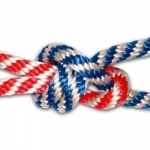
Knot Guide (100+ knots)
Utilities and Sports
App
#1 Knot App on iTunes!!! Now with 103 knots and continuous new additions! An App Store Essentials...

YouCam Makeup-Magic Selfie Cam
Beauty, Lifestyle and Photo & Video
App
**The world's #1 makeover app with hundreds of virtual makeup and beauty products to try on from top...
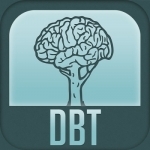
DBT Diary Card and Skills Coach
Health & Fitness and Medical
App
DBT Diary Card is the only DBT iPhone app designed and created by a licensed and DBT intensively...
Ivana A. | Diary of Difference (1171 KP) rated Alienated: Grounded At Groom Lake in Books
Aug 3, 2020
<a href="https://diaryofdifference.com/">Blog</a>; | <a href="https://www.facebook.com/diaryofdifference/">Facebook</a>; | <a href="https://twitter.com/DiaryDifference">Twitter</a>; | <a href="https://www.instagram.com/diaryofdifference/">Instagram</a>; | <a href="https://www.pinterest.co.uk/diaryofdifference/pins/">Pinterest</a>;
<img src="https://diaryofdifference.com/wp-content/uploads/2020/05/Book-Review-Banner-31.png"/>;
Alienated: Grounded at Groom Lake by Jeff Norton was the perfect middle grade quarantine book I was waiting for! Also - during the quarantine, Jeff is reading a chapter a day on his YouTube Channel, so please do check it out. His reading is wonderful!
From the first moment I read the synopsis, I knew I was going to like this book.
Fourteen-year-old Sherman is used to moving schools. But he's never been to a school like Groom Lake High, the high school for aliens.
It's a very alien environment for him, and he has to fit in. He quickly makes friends with a gang of galactic misfits. When the school bully NED endangers planet Earth, Sherman and his friends have to do anything they can to stop him!
<b><i>My Thoughts:</i></b>
The thing I loved most about Alienated: Grounded at Groom Lake was the amazing word play and inside jokes. It is very well thought and written and I really enjoyed it! There were so many puns and witty jokes that a children might initially miss, but will definitely make an adult chuckle.
<b><i>"It suddenly struck me that Facebook might be one of the alien inventions we were all using. I had seen its inventor on TV once and he definitely looked more alien than human."</i></b>
We read the book from Sherman's point of view.
And through him, we find out everything. His thoughts, his choices, his fears and his dreams. Not only do we get to know him, but we also get to watch his character grow as we move throughout the book.
<b><i>"Sherman, when you get older, you'll come to appreciate that life is basically a series of disappointments."</i></b>
Even though alien, this high school puts Sherman through all the troubles a normal school does: making friends, being bullied and having a crush. But Sherman also gets to fly rockets and has a chance to save the world!
Sherman's sister and his group of friends are awesome! They are funny and smart. I loved Octo, especially for his bravery and selflessness. I also loved the fact that the female characters were presented as strong and powerful individuals. It was a tiny touch, but quite meaningful, and it shouldn't go unnoticed.
<b><i>"Now don't be fooled. Jess might look like a malnourished goth queen, but she punches like a heavyweight."</i></b>
I also liked NED as a character.
<b><i>"I'd call him a bully, but that's giving bullies a bad name."</i></b>
He was quite a big bully - that is true. However, being evil is the only think he learned from his parents while growing up. The lesson we can learn is that sometimes we do bad things because we don't know any different. But what we do once we are given a second chance is what really matters!
I absolutely loved this book and I recommend it not only to middle-graders, but to people of all ages. It's a gem and it deserves to be n every child's library.
I received a copy of this book through a giveaway on Toppsta. All opinions are my own and completely unbiased.
<a href="https://amzn.to/2Wi7amb">Wishlist</a>; | <a
<a href="https://diaryofdifference.com/">Blog</a>; | <a href="https://www.facebook.com/diaryofdifference/">Facebook</a>; | <a href="https://twitter.com/DiaryDifference">Twitter</a>; | <a href="https://www.instagram.com/diaryofdifference/">Instagram</a>; | <a href="https://www.pinterest.co.uk/diaryofdifference/pins/">Pinterest</a>;
Ross (3284 KP) rated Foundryside in Books
Aug 31, 2020
Sancia is a key customer for some of this black market. She is a mercenary who will, for a fee, steal things. Not much of Sancia's past work is given, whether she is just a thief for hire, or has killed. She is a good strong, complicated character. Sancia has the ability to sense the thoughts of inanimate objects. For example, she can touch a wall and find out where the wall joins to other walls, whether there are gaps, whether someone is leaning on the other side, etc. This comes in handy when she successfully steals a box from a storage facility that contains a magical key that she can speak to.
There then follows a gripping plot to dethrone the merchant houses by seeking to stop them achieving more than just market share.
As with all the best fantasy worlds, the nature of things is revealed gradually over the course of the book. At times this verges on deus ex machina, but never quite goes over that line, things being mostly plausible given what we already know.
The dialogue of the book is where I have most of my issues with it. As with a number of recent books, the author is clearly an American and puts a number of Americanisms into the prose. While I am no language snob and can happily accept these in general, it is harder to do so in a fantasy book, especially one where other aspects of the language are clearly supposed to be more British English. The combination of a character saying "you all" or "most always" or "goddamn" and then using the word "arse" rather than "ass" just really ground my gears. It would have been much better to have been consistent and stick with "ass" and closer to the author's true voice.
Additionally, as with a number of fantasy books, new swear words are invented. These are partly explained and linked to the world, but it just comes across as a means of swearing without saying the actual "f" word. The word "scrumming" is far too twee a word to convey the same emotion as the word it is trying to replace and takes me right out of the book.
The pacing of the book was mostly fine, a few times it did seem to grind to a halt or there were long chapters of gradual exposition, but the action sequences, of which there were plenty, were thrilling and well told.
Overall, I did really enjoy this book, but the language used at times took me out of it and spoilt the mood a little. I can always tell how much I am enjoying a book by how quickly I read it and the number of comics I read simultaneously. My comic reading did go up a notch while reading this book.
